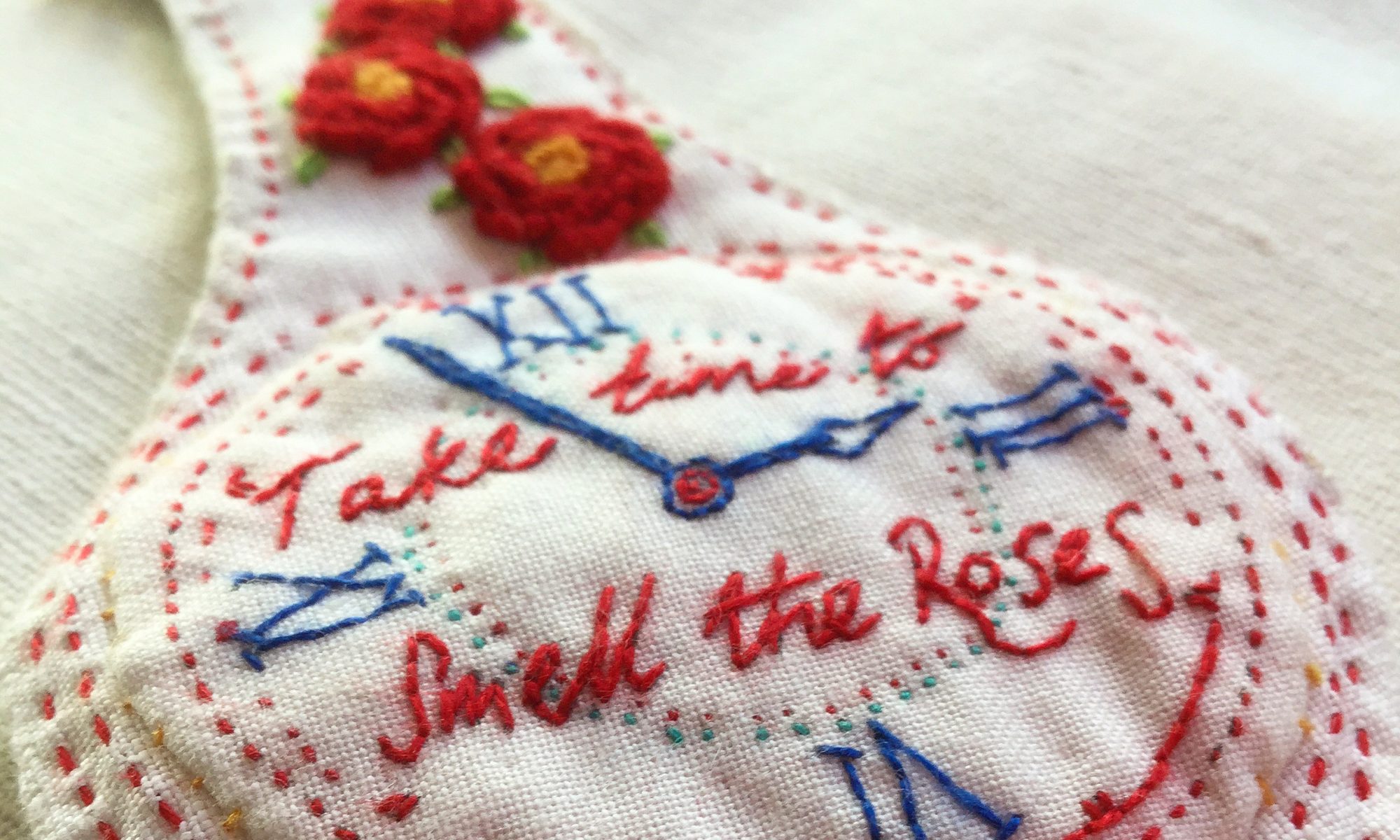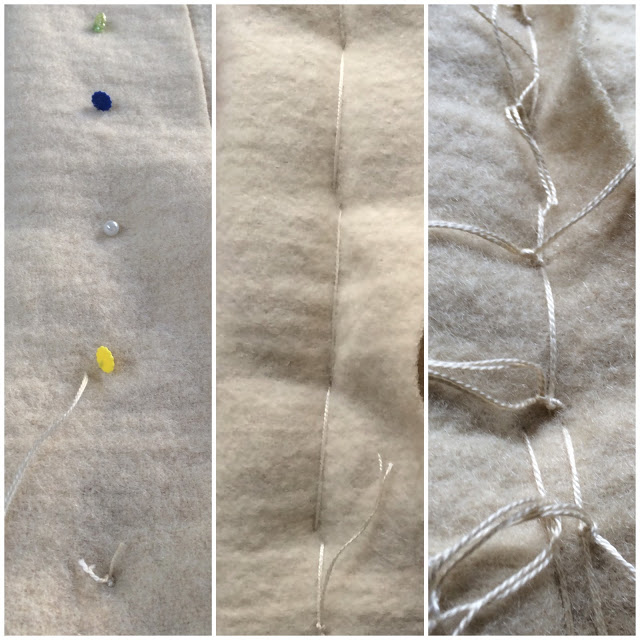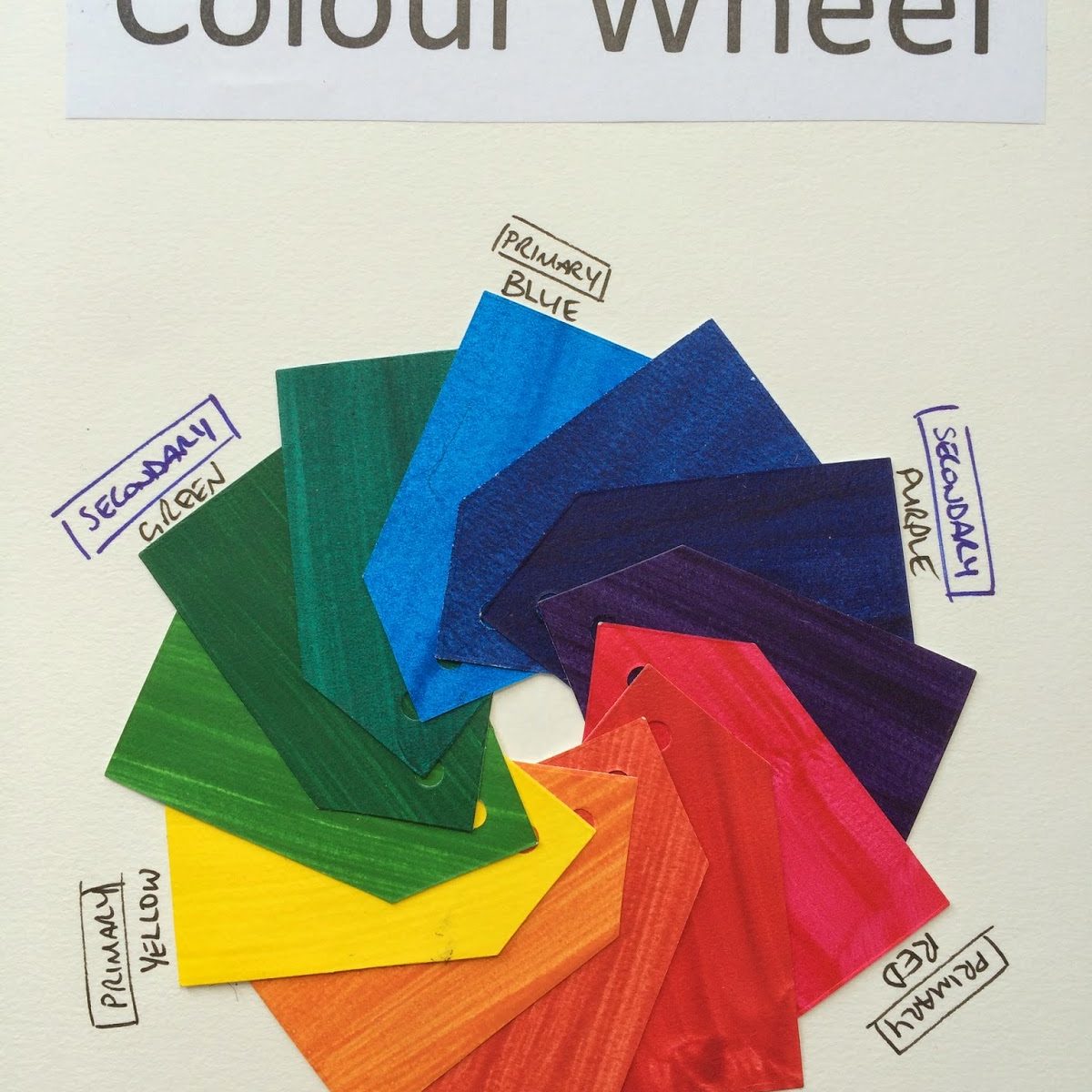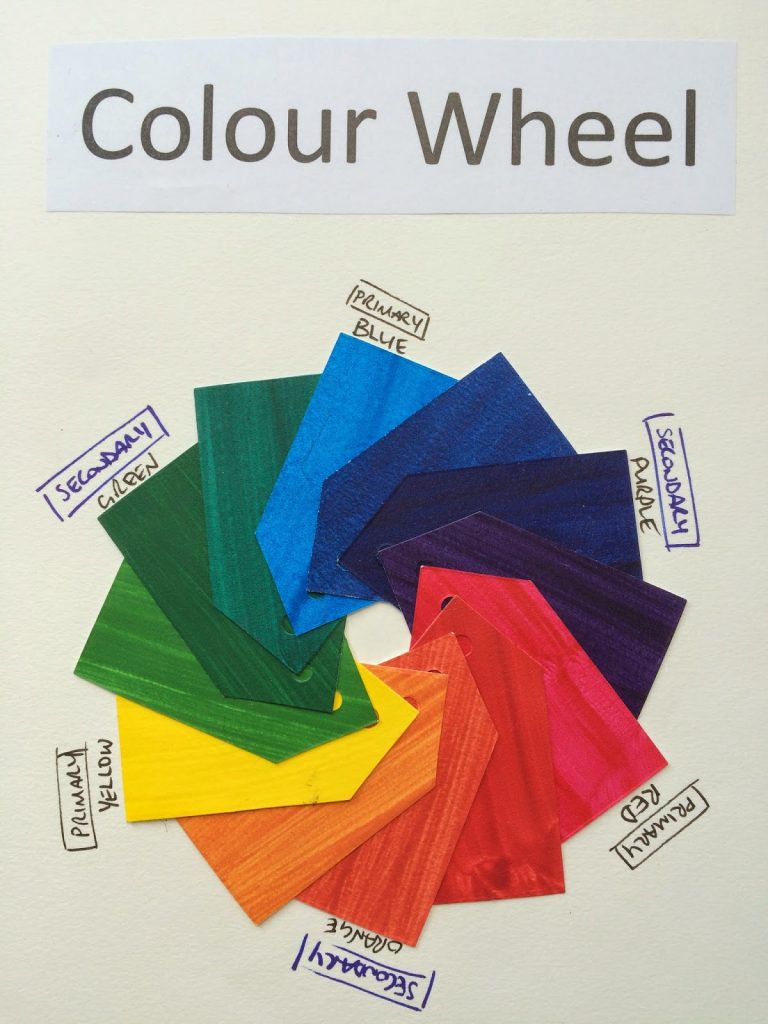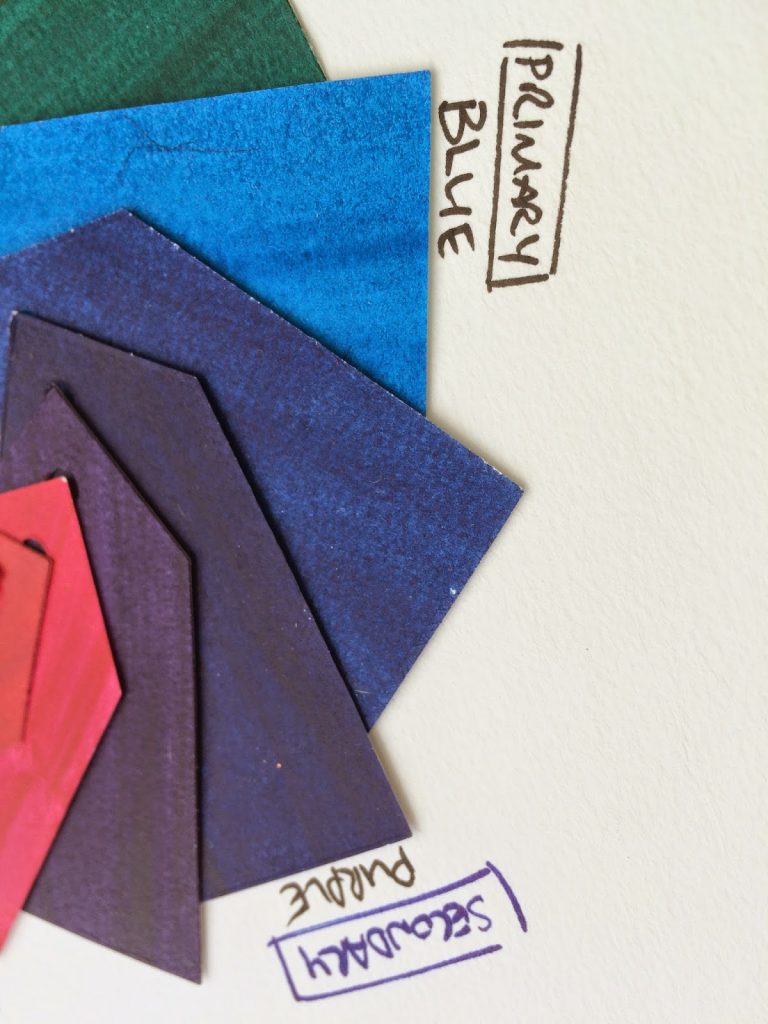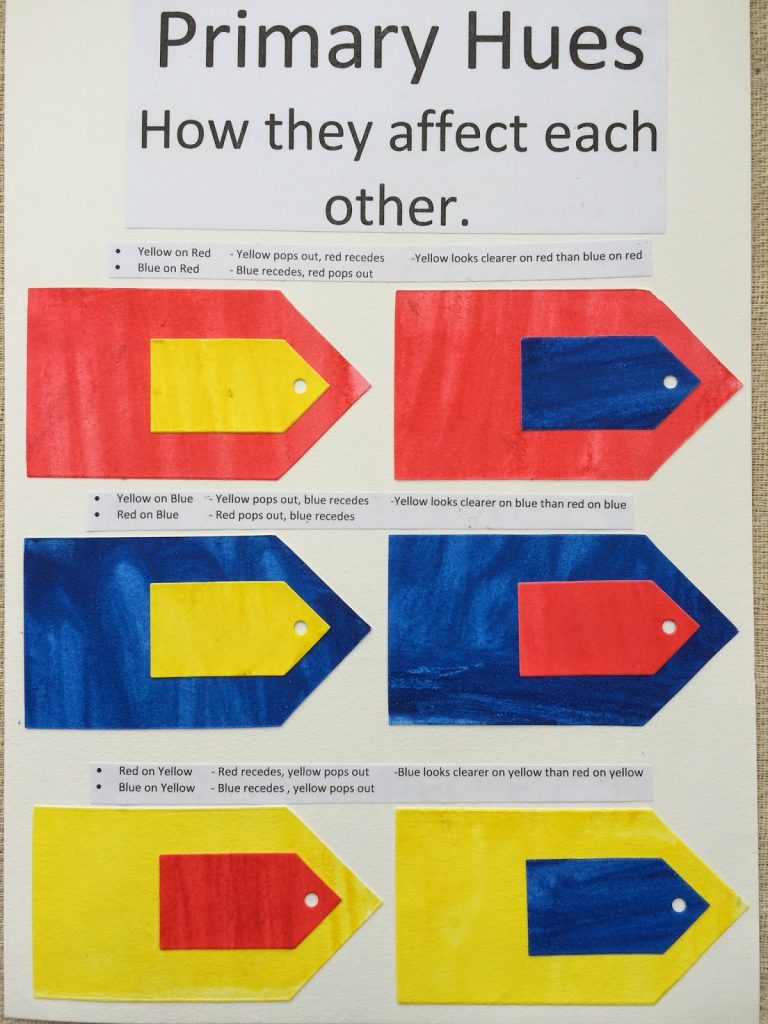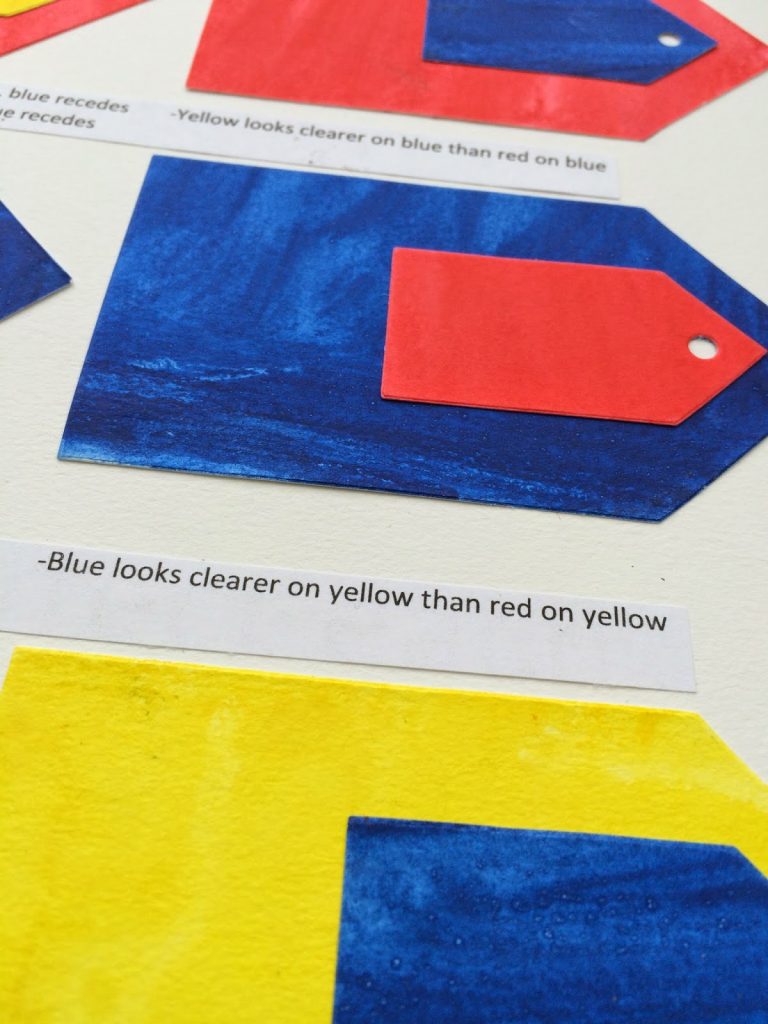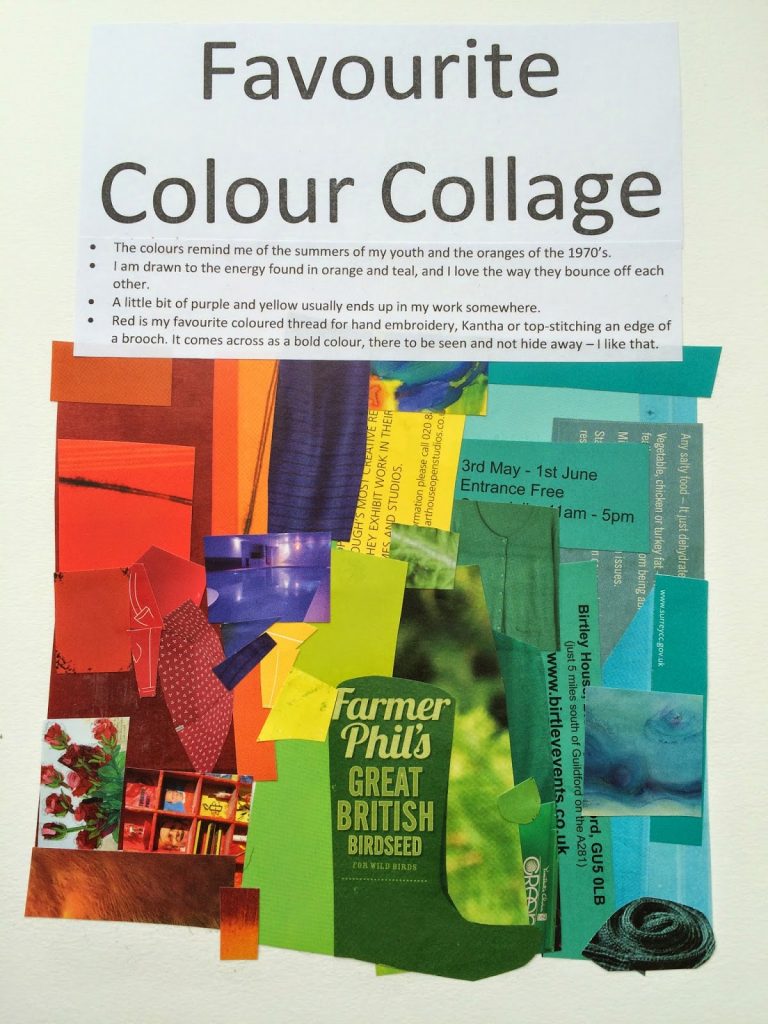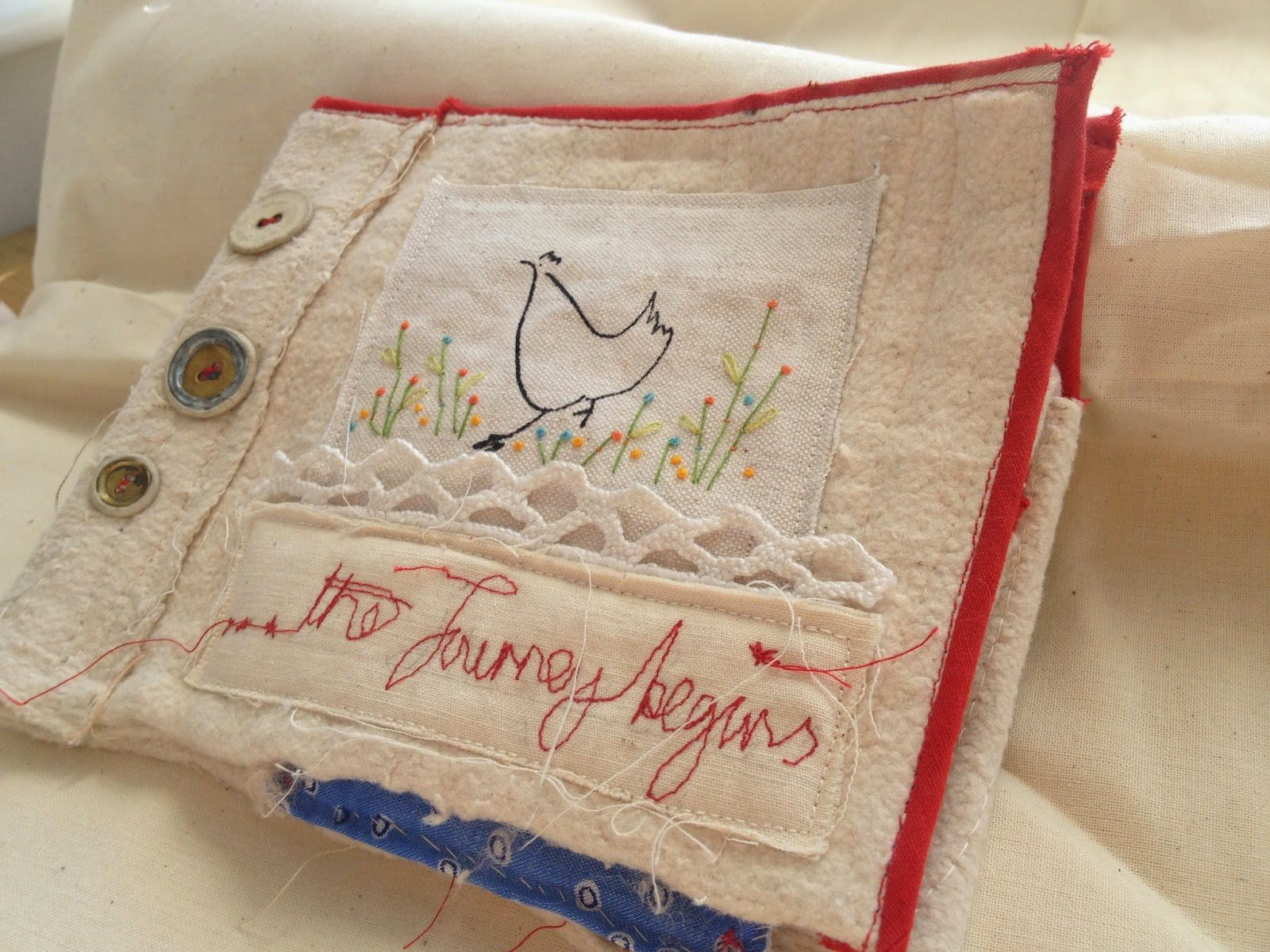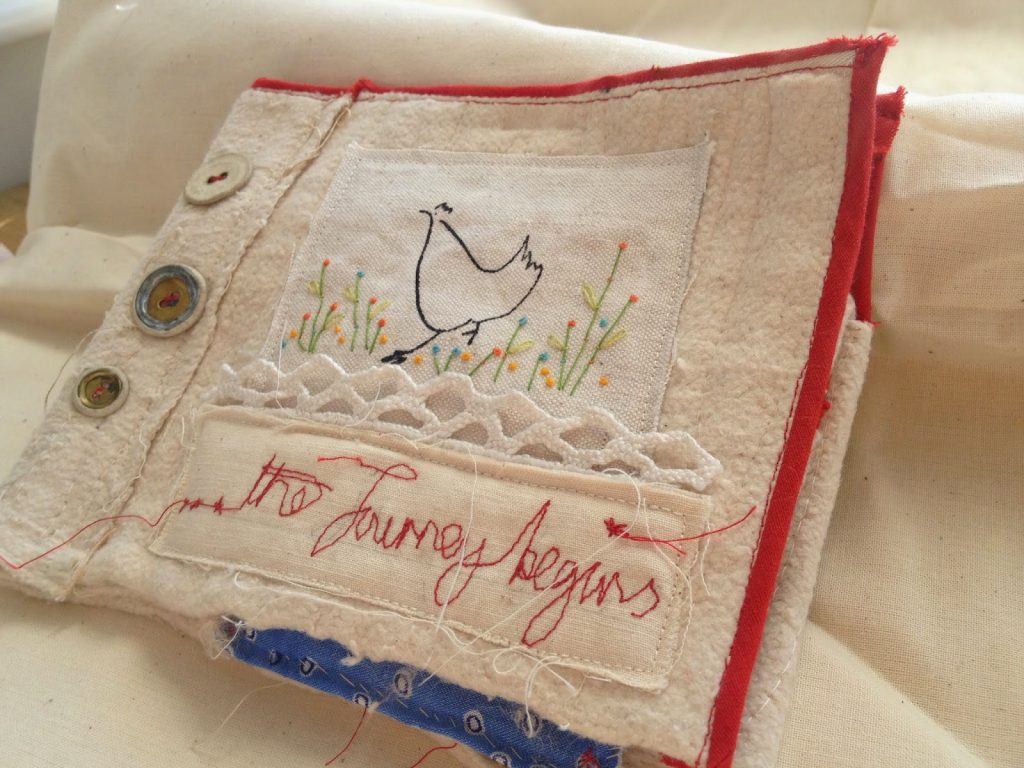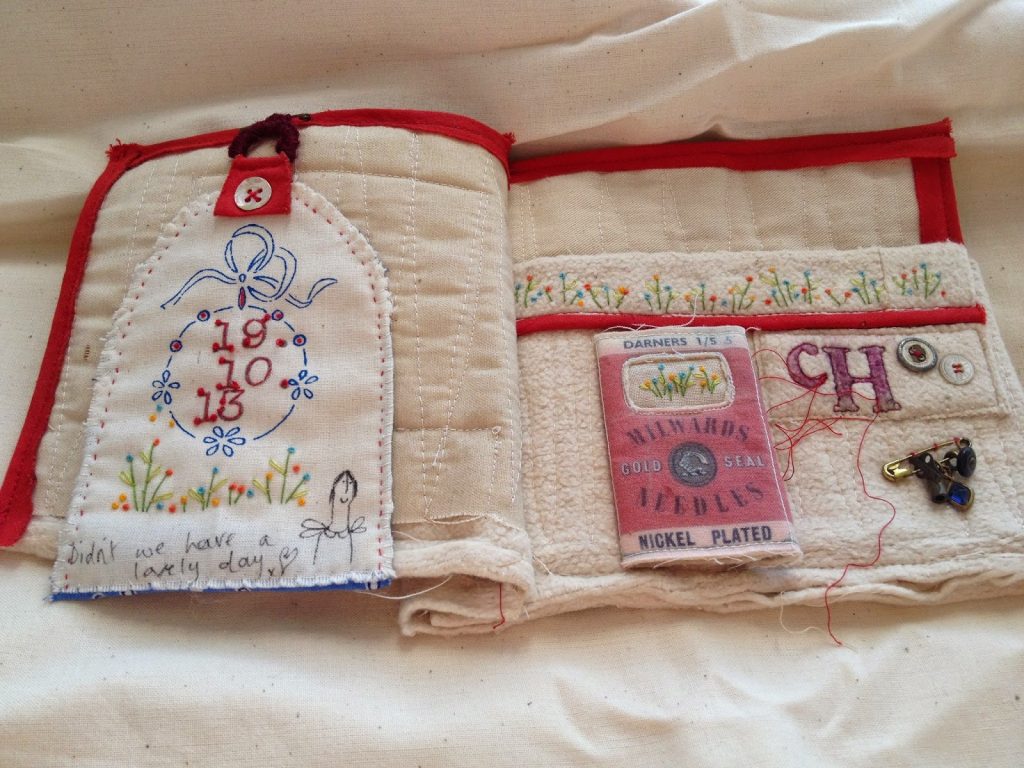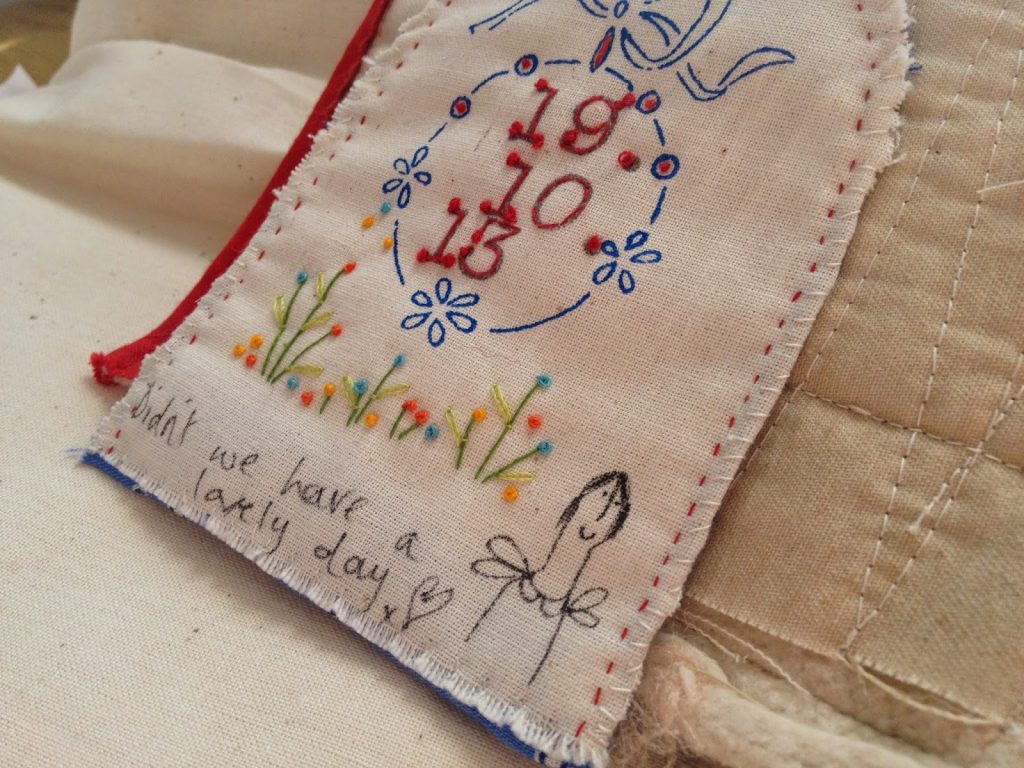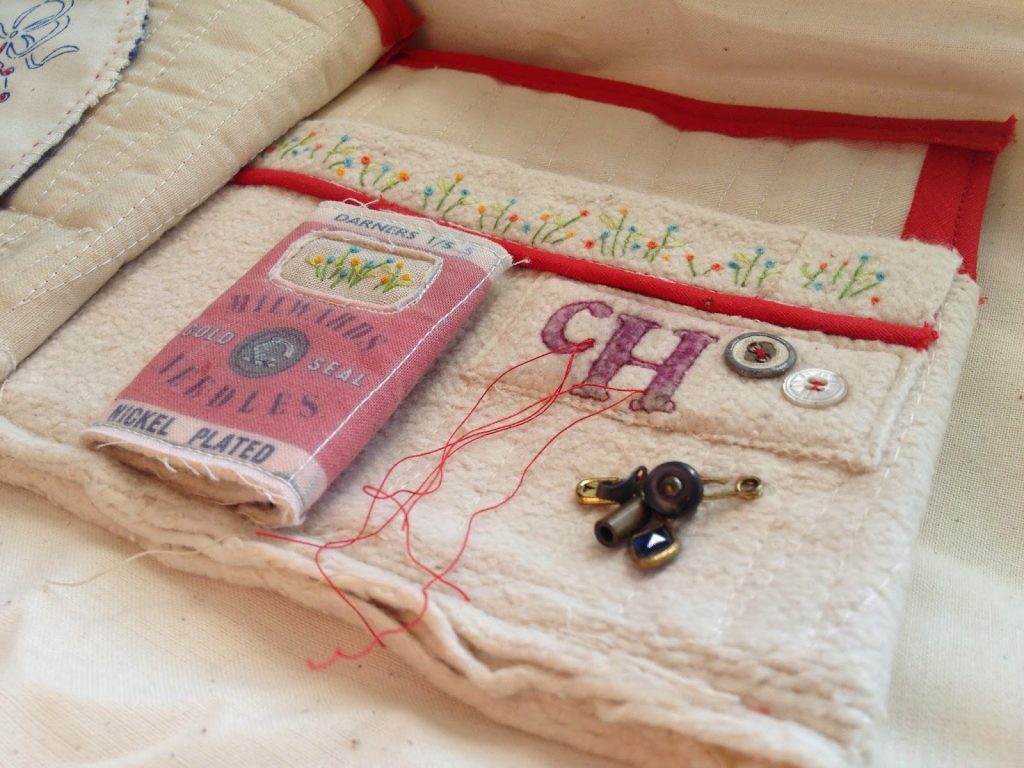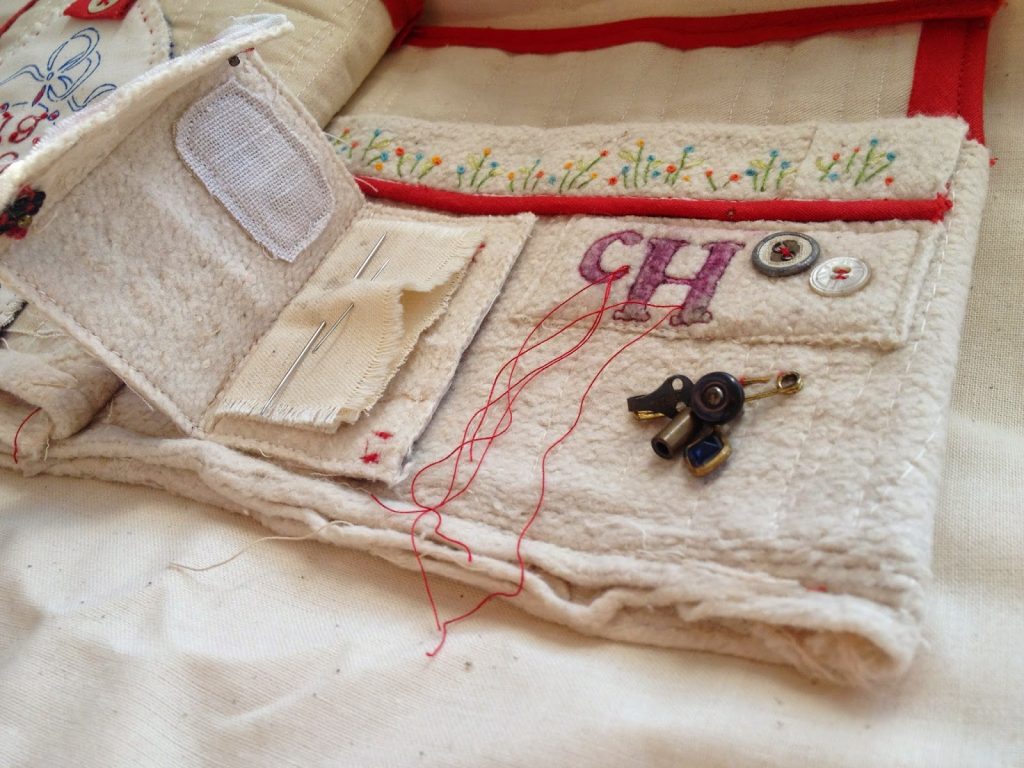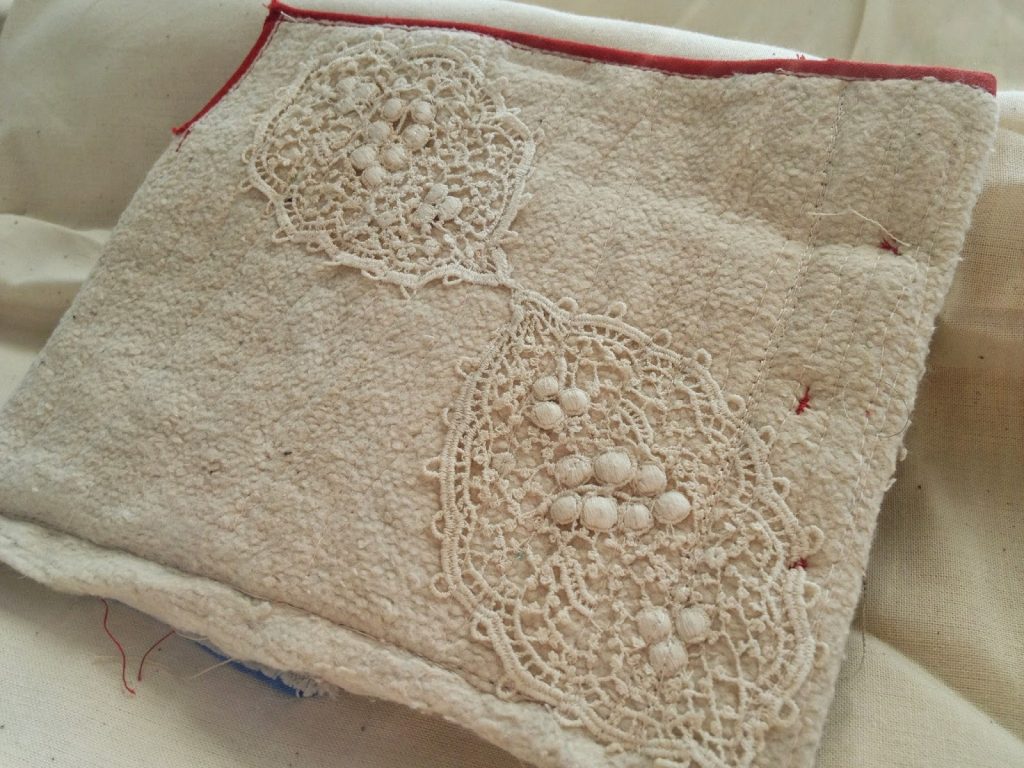This project was made in less than a week.
I received a call requesting a resource full of garment fasteners for a young autistic boy.
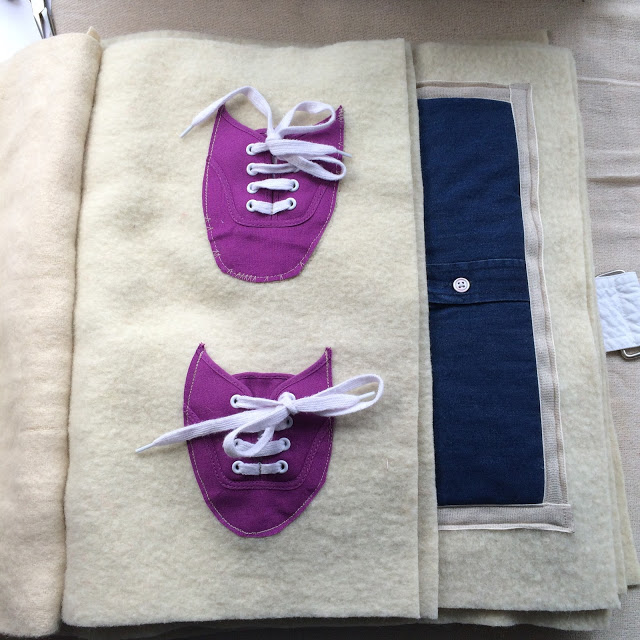
After thinking about it’s design, I started rummaging around the charity shops looking at everything in a different way. Usually I shop for textured fabrics for embroidery, but this time it was any and every garment and bag fastener I could lay my hands on. Luckily I sourced it all in one big shop – zips, toggles, hooks and eyes, magnetic poppers, poppers, buttons and Velcro. I had a stash of vintage wool blankets at home and set about thinking about its construction.
If you would like to make one too, here’s how I made it.
- What you’ll need:
-
- Wool blanket to make the pages
- Garments with suitable fasteners (dependant on the ages of the users, be aware of choking hazards such as buttons and laces)
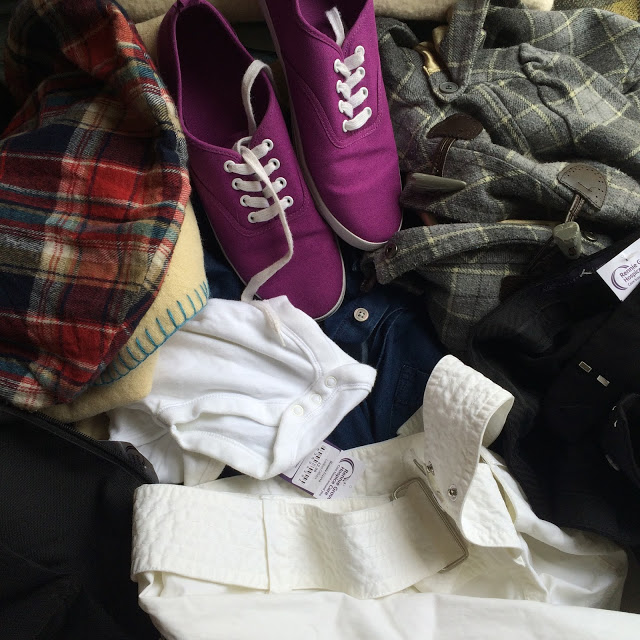
- Thick Perle cotton thread and a long needle (Trapunto or Mattress needle
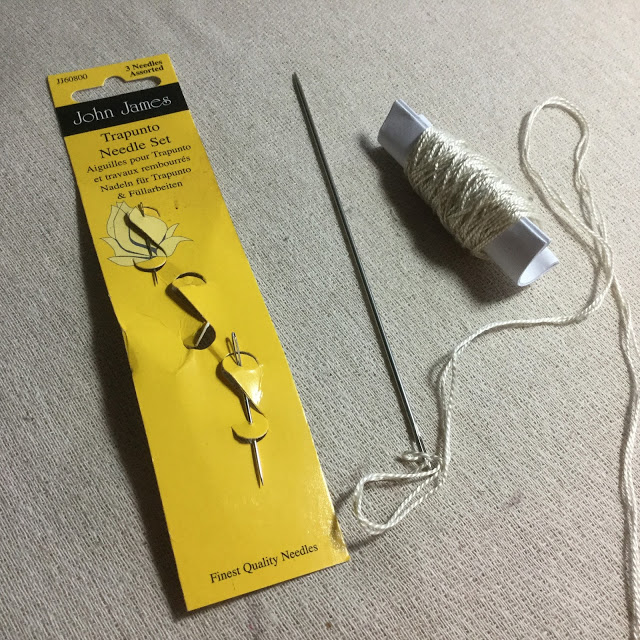
- Ribbon or cotton tape for top stitching onto the cut edges of garments.
- Sewing machine and thread (I used a walking foot too for stitching some of the pieces).
- Wash and press everything before cutting.
- Cutting the blanket.
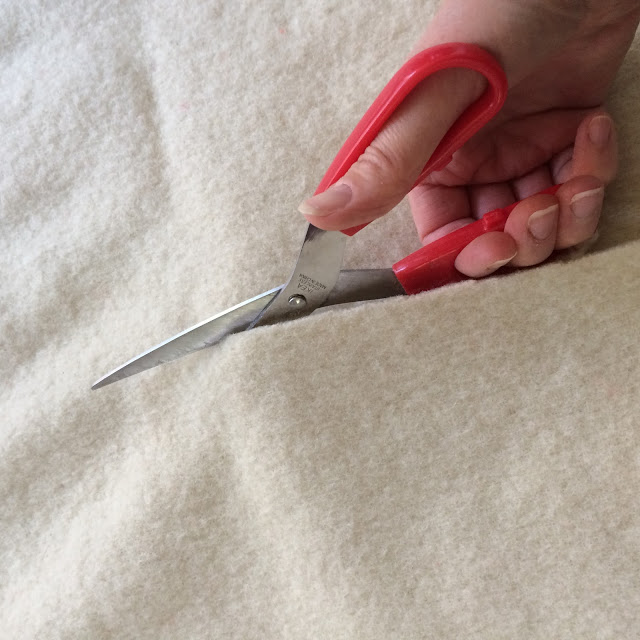
-
- I looked at the dimensions of the largest piece to be appliqued onto a page – a baby’s vest – and took this as the starting point for the page’s measurements.
- Cut pages 17″ x 17″. Some I cut 17″ x 12″ to make narrower pages.
- Cut front page 17″ x 17″
- Cut a piece of blanket 22″ x 17″ for the back cover (which wraps around the front to make the spine of the book)
- Cut the garments and the fasteners ensuring there is enough seam allowance to stitch the piece down.
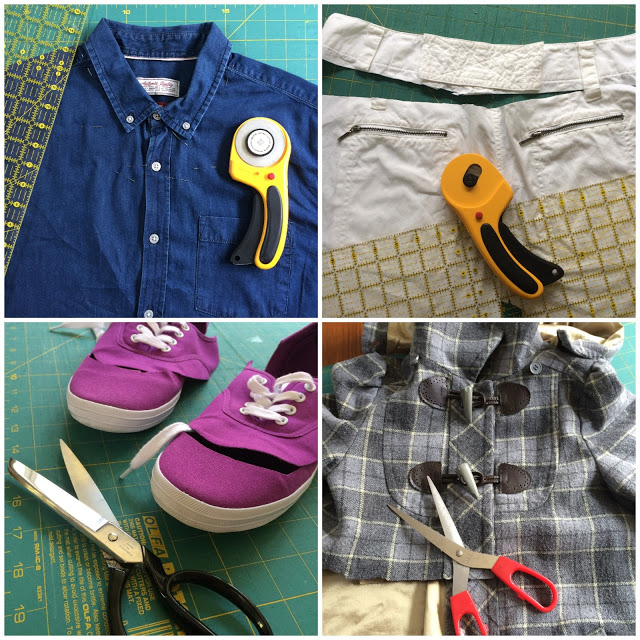
- Arrange the pieces onto pages, leaving a 3″ gap at one edge of the blanket page for stitching into the spine. I sourced a book fastener too from the white trousers.
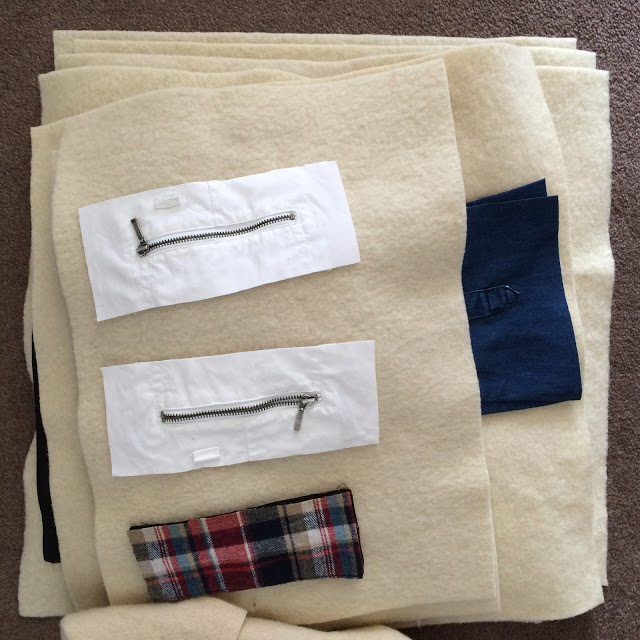
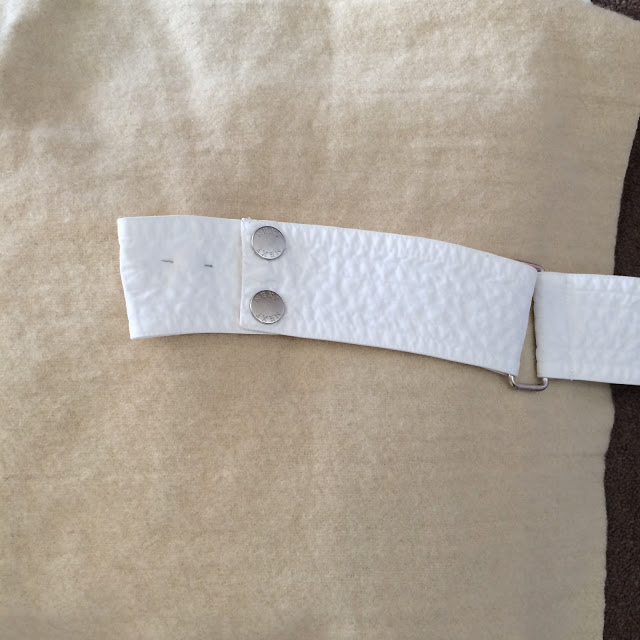
- Pin and using your sewing machine, stitch into place using a running stitch or zig-zag stitch. Add ribbon or tape to the raw edges if needed.
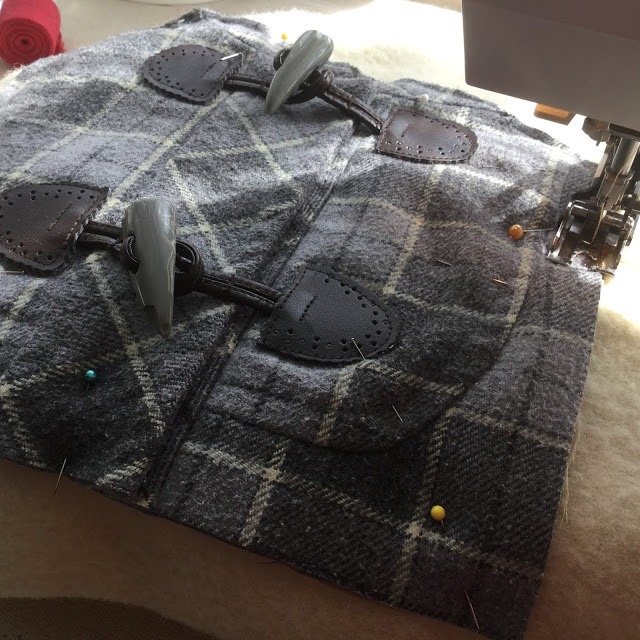
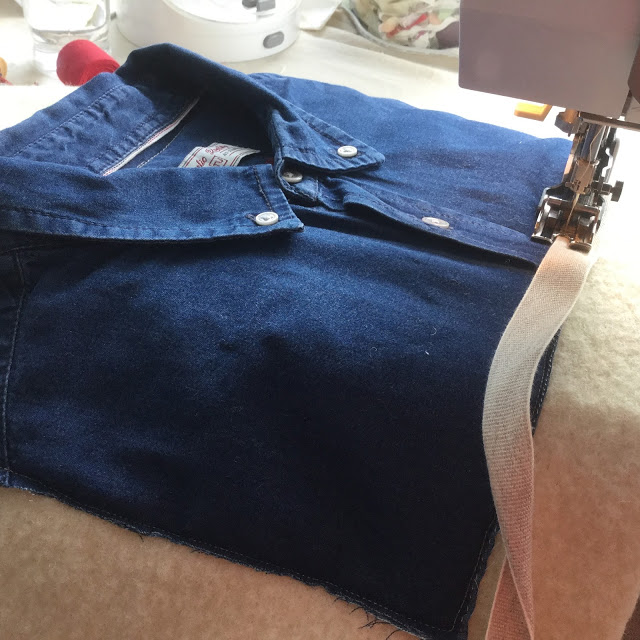
- Layer the pages, the front page and back page. Wrap the excess fabric from the back page around to the front to cover to make the spine.
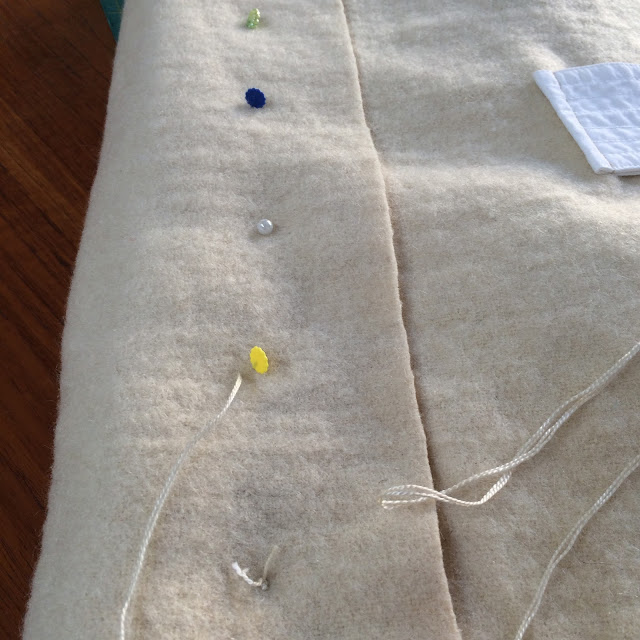
- Use an odd number of long pins (I used Quilting pins) to hold the spine edge ready for binding, spaced around 2″ apart.
- Measure enough thread – 5 x the length of the spine – thread the needle, double the thread and knot (I tried using single thickness but double thread will be far stronger). Using the position of the long pins as a guide, make a book binding pamphlet stitch to hold the spine together.
- Add extra stitches to hold the pages in place.
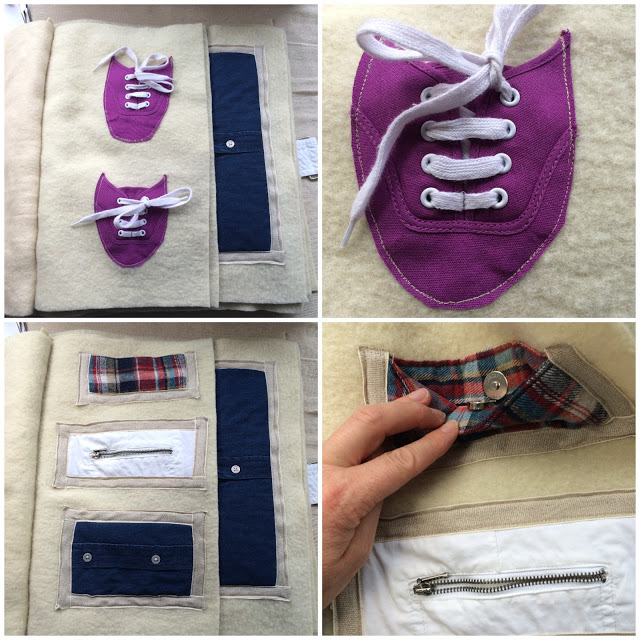 |
| The laces were stitched down to stop them being removed |
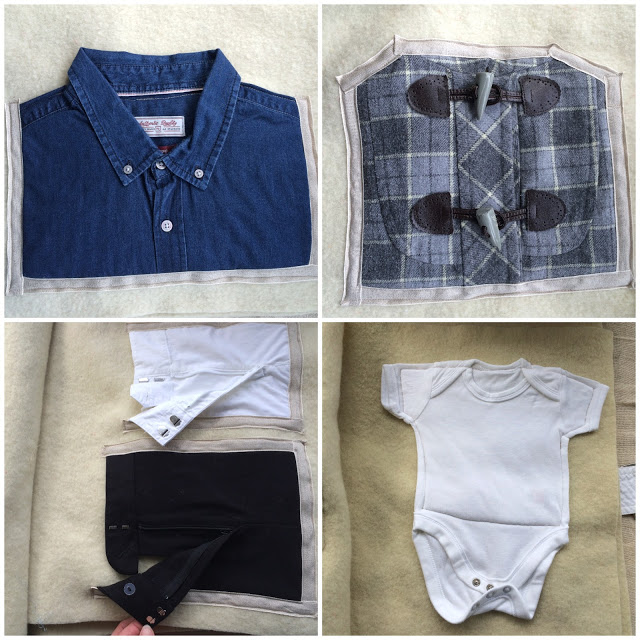
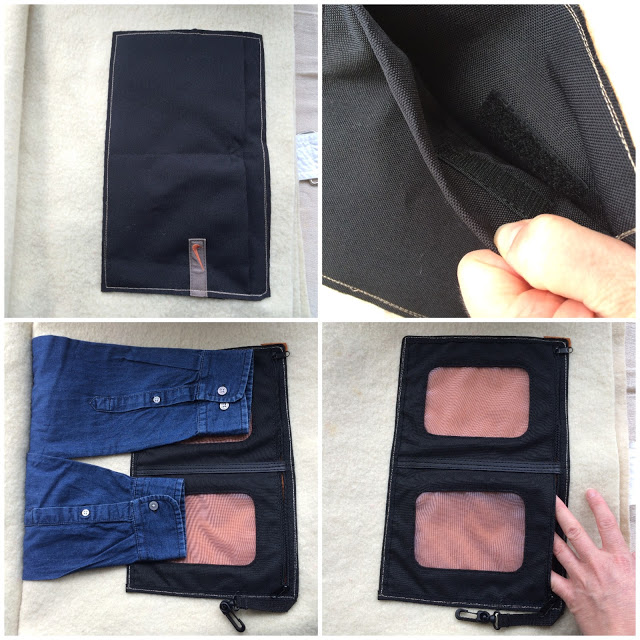 |
| Shirt sleeves were added between the pages |
I’ve had a brilliant response to this book from teachers and parents who feel it would be a perfect resource for infants and special needs students. I’d love to hear if you make one or have made something similar in the past. Please share and leave your comments below.
